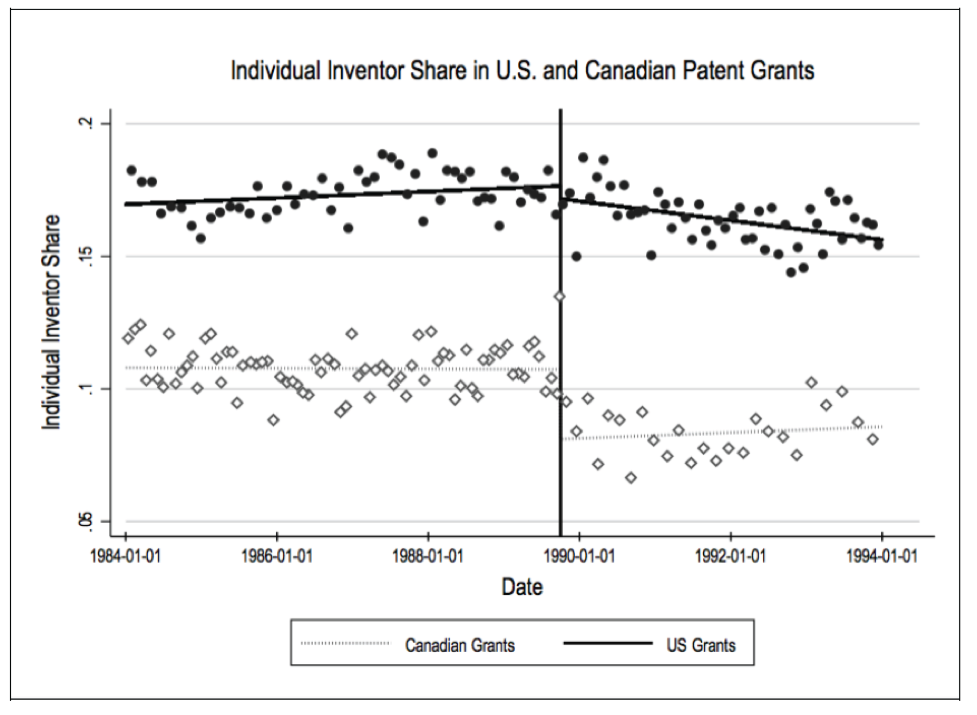Will First-to-File Hurt Small Inventors?

(Digital Vision)
The U.S. just passed the first major patent reform in nearly sixty years – which includes as a central provision a change to the patent priority rule. Instead of awarding a patent to the first person to invent, we will join other nations in awarding patents to the first person to file an invention.
David Abrams and Polk Wagner have a great paper looking at whether the proposed change in our patent system from a “first to invent” regime to a “first to file” regime is likely to disadvantage individual inventors. The concern is that corporate inventors will have an easier time than the individual in gearing up to draft and file a patent application.
The paper ingeniously looks to see what happened when Canada introduced a similar reform in 1989. The paper is also a great way to teach yourself about the difference-in-difference approach to estimation. The paper first estimates the pre-reform difference between the U.S. and Canada in the proportion of patents going to individual inventors. It then looks to see whether this difference changed – that is, whether there was a difference in the difference – after the Canadian first-to-file reform went into effect.
This single picture sums up their central finding:

As the authors explain:
The most compelling evidence for the impact of the first-to-file rule on small inventors is a visual difference in difference. The traditional difference-in-difference subtracts off the change in the control group from the change in the treated group. In this case, the results are so stark that it is easily seen by the visual comparison in [the figure], which reports the representation of individual inventors in the U.S. and Canada. In [the figure] we see a sharp decline in the fraction of individual inventors, from 10.7% prior to the end of 1989 to 7.8% afterward. During the same period in the U.S. the proportion of individual inventors dropped slightly, from 17.4% to 16.5%.
They summarize the article (and signal its policy relevance) in this abstract:
Even as we stand on the cusp of the broadest set of changes to the US Patent Law in two generations, virtually no empirical analysis has been conducted on the impact of the primary components of the proposed reforms. Until now. In this paper we investigate the expected effects on patenting behavior of the major change in the America Invents Act of 2011: a shift in the patent priority rules from the United States’ traditional “first-to-invent” system to the dominant “first-to-file” system. This is a deeply controversial change: Opponents argue that first-to-file disadvantages small inventors and leads to lower quality patents. Those in favor emphasize administrative simplicity and the cost savings of first-to-file. While there has been some theoretical work on this topic, we use the Canadian experience with the same change the US is considering as a natural experiment to shed the first empirical light on the question.
Our analysis uses a difference-in-difference framework to estimate the impact of the Canadian law change on small inventors. Using data on all patents granted by the Canadian Intellectual Property Office and the US Patent and Trademark Office, we find a significant drop in the fraction of patents granted to small inventors in Canada coincident with the implementation of first-to-file. We also find no measurable changes in patent quality. The results are robust to several different specification checks. While the net welfare impact that can be expected from a shift to first-to-file is unclear, our results do reveal that, contrary to the conventional wisdom, the rule change is not free — it is likely to result in reduced patenting behavior by individual inventors.

Comments